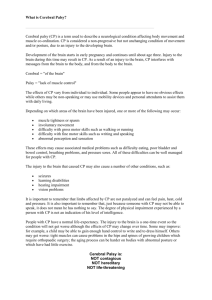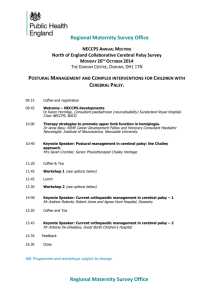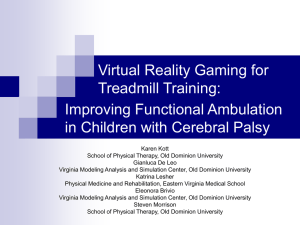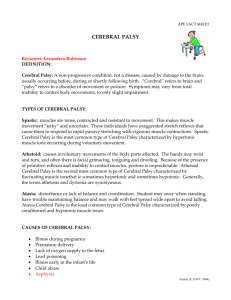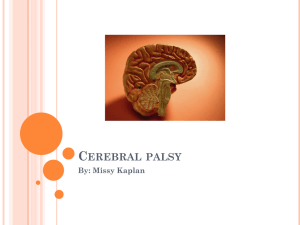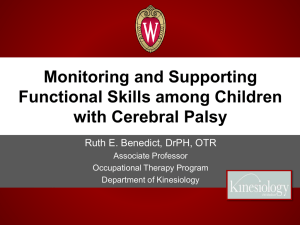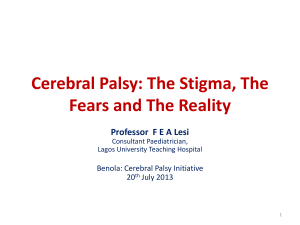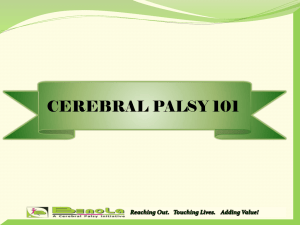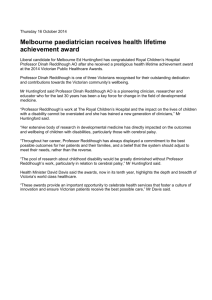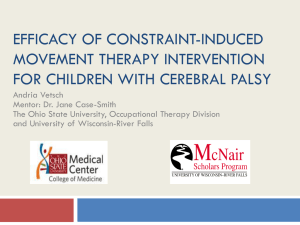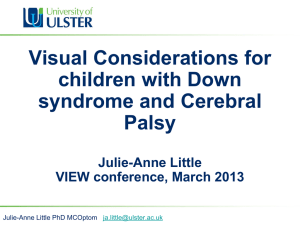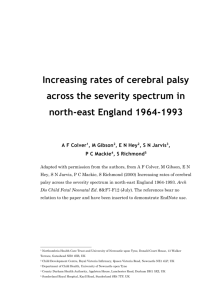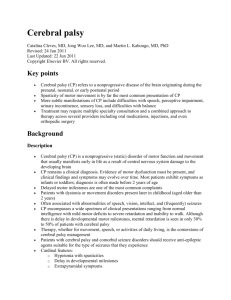Cerebral Palsy and Perinatal Infection in Children
advertisement
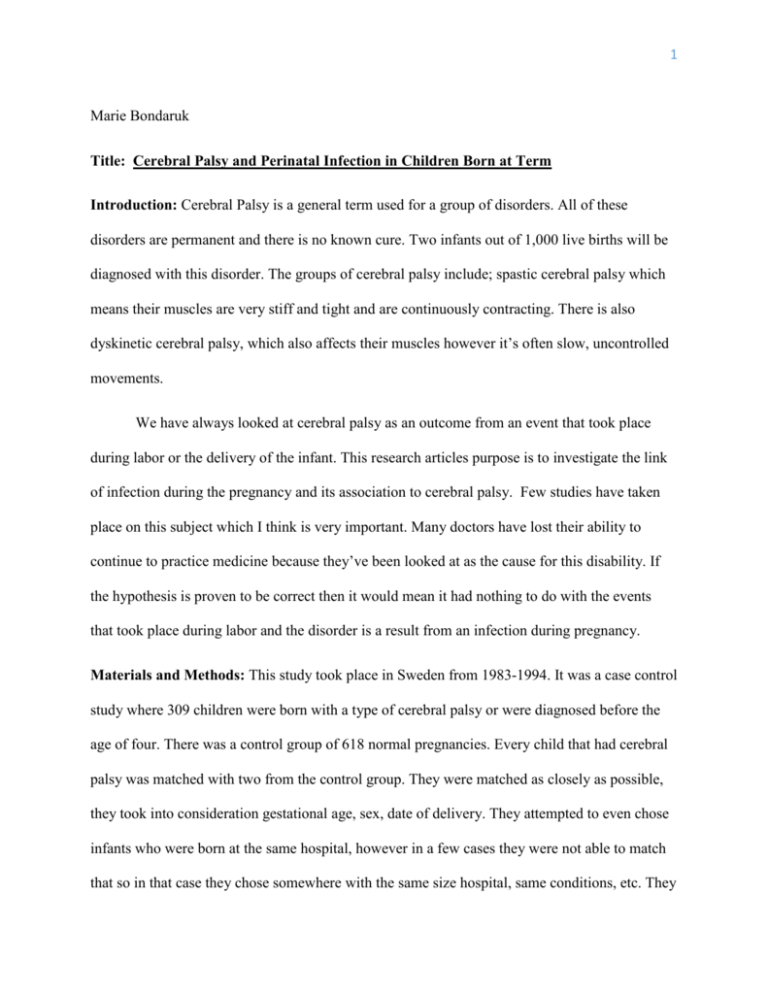
1 Marie Bondaruk Title: Cerebral Palsy and Perinatal Infection in Children Born at Term Introduction: Cerebral Palsy is a general term used for a group of disorders. All of these disorders are permanent and there is no known cure. Two infants out of 1,000 live births will be diagnosed with this disorder. The groups of cerebral palsy include; spastic cerebral palsy which means their muscles are very stiff and tight and are continuously contracting. There is also dyskinetic cerebral palsy, which also affects their muscles however it’s often slow, uncontrolled movements. We have always looked at cerebral palsy as an outcome from an event that took place during labor or the delivery of the infant. This research articles purpose is to investigate the link of infection during the pregnancy and its association to cerebral palsy. Few studies have taken place on this subject which I think is very important. Many doctors have lost their ability to continue to practice medicine because they’ve been looked at as the cause for this disability. If the hypothesis is proven to be correct then it would mean it had nothing to do with the events that took place during labor and the disorder is a result from an infection during pregnancy. Materials and Methods: This study took place in Sweden from 1983-1994. It was a case control study where 309 children were born with a type of cerebral palsy or were diagnosed before the age of four. There was a control group of 618 normal pregnancies. Every child that had cerebral palsy was matched with two from the control group. They were matched as closely as possible, they took into consideration gestational age, sex, date of delivery. They attempted to even chose infants who were born at the same hospital, however in a few cases they were not able to match that so in that case they chose somewhere with the same size hospital, same conditions, etc. They 2 reviewed all 927 pregnancies and came up with a total of 26 infectious variables. Chorioamnionitis, which is an inflammation in the fetal membranes, is a severe infection that’s related to the genital tract that might be associated with brain injury. (Kristina Ahlin, 2013) The other infections they were looking for was, fever before active labor, any sexually transmitted diseases and urinary tract infections. Results: “In the spastic cerebral palsy group, there were several significantly associated infectious factors such as bacterial growth in urine during pregnancy (n=18), Escherichia coli bacterial growth in urine during pregnancy (n=9), and infectious disease during pregnancy (n=100), severe infectious diseases during pregnancy (n=19), antibiotic therapy once during pregnancy (n=54), antibiotic therapy several times during pregnancy (n=16), antibiotics during delivery (n=8), antibiotics postpartum (n=17), and neonatal infection (n=15). In dyskinetic cerebral palsy only antibiotic therapy postpartum (n=7) and neonatal infection (n=4).” (Kristina Ahlin, 2013) With spastic cerebral palsy there was a significantly higher risk of cerebral palsy with antibiotic therapy during delivery, postpartum and neonatal infection. E coli bacterial growth in urine, severe infection during pregnancy and fever postpartum. Sexually transmitted diseases, hepatitis, group b strep, and foul smelling amniotic fluid were not related to this type of cerebral palsy. In dyskinetic cerebral palsy there were no infectious factors that caused this disorder. Discussion: In spastic cerebral palsy, infection during pregnancy plays a huge role in whether or not the child is born with this disorder. However, infections during pregnancy did not seem to contribute to dyskinetic cerebral palsy. Their hypothesis is that “maternal infection activates an inflammatory response in the fetus, termed fetal inflammatory response syndrome” (Kristina 3 Ahlin, 2013). They determined that the fetal or neonatal injury that leads to cerebral palsy is because of this syndrome. A pregnancy with severe maternal infection has an increased risk of having a child with cerebral palsy by fifteen times. Urinary tract infections and other mild infections while pregnant only have a five percent increased risk. The main weakness in this study is that when this study took place the doctors in Sweden did not routinely test for group b strep on every patient. We now know that if the infant is exposed to this bacteria during delivery it can cause a lot of problems. I think that being done on every patient would have altered the study’s findings and helped to determine if it’s a risk factor. 4 References Kristina Ahlin, M. K.-B. (2013). Cerebral Palsy and Perinatal Infecction in Children Born at Term. Obstetrics and Gynecology, 41-49.
